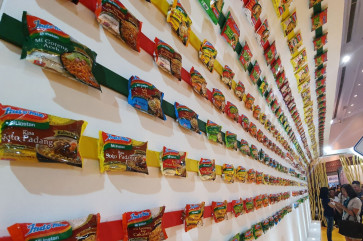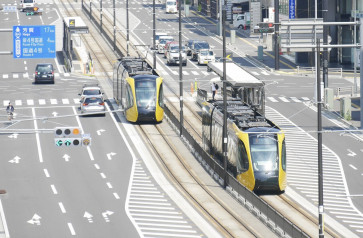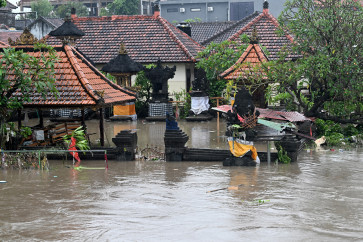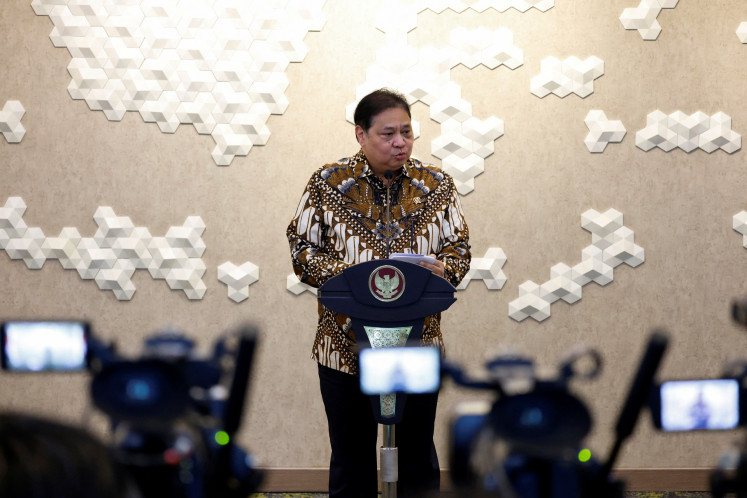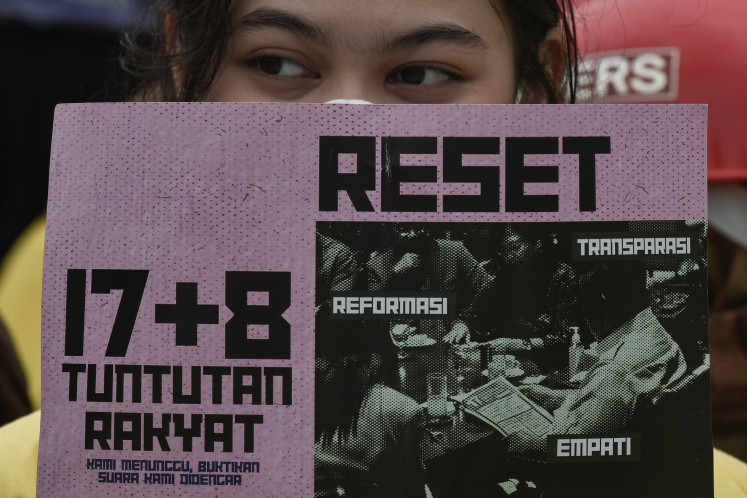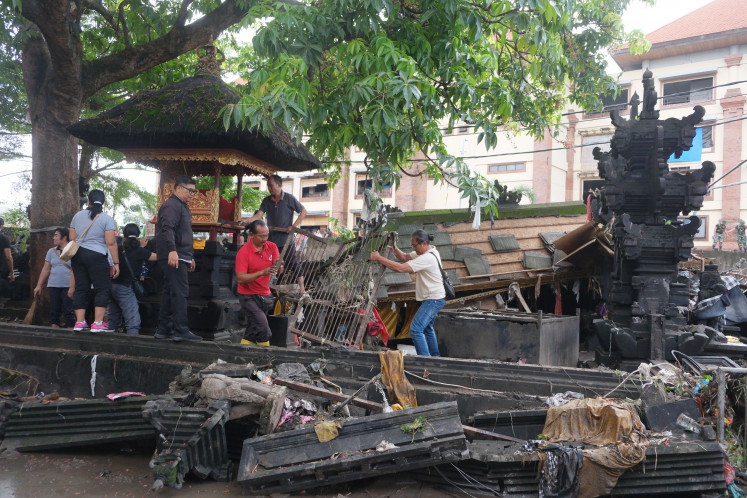Popular Reads
Top Results
Can't find what you're looking for?
View all search resultsPopular Reads
Top Results
Can't find what you're looking for?
View all search resultsNegotiators adopt guidance to measure emission cuts
After two years of debate, negotiators finally adopted a guidance to measure forest emission cuts in developing nations but had yet to settle financing scheme and indigenous people issues in the projects
Change text size
Gift Premium Articles
to Anyone
A
fter two years of debate, negotiators finally adopted a guidance to measure forest emission cuts in developing nations but had yet to settle financing scheme and indigenous people issues in the projects.
The decision, made late Saturday, also recognized the roles of “REDD plus” in reducing global emissions to protect the planet, which in turn would pave the way for forest nations to gain financial incentives from rich countries.
The REDD (Reducing Emissions from Deforestation and Forest Degradation) plus is emission reductions from deforestation, forest degradation, conservation, sustainable management of forest and replanting.
“It is a good starting point to move on further negotiating on the REDD plus,” Indonesia’s negotiator Try Tharyat told The Jakarta Post on Sunday.
He said such technical issues would be used as the basis to work on the REDD plus in developing countries and continue negotiations for financial schemes to support this.
Negotiators from 192 countries will continue their financial schemes discussions Monday.
The decision says forest nations are required to set up a forest monitoring system to calculate emissions and make the inventory of carbon stocks by using remote sensing with ground checks.
It says the methodology to calculate forest emissions should be based on the guidance from the intergovernmental panel on climate change (IPCC), an independent body focusing on the scientific facts on climate change affairs.
Forest nations are also required to identify the main drivers of deforestation and forest degradation and elaborate activities that can reduce the emissions.
The original REDD scheme was adopted in the 2007 Bali climate conference. However, the scheme was then enlarged by allowing countries that conserve and sustainably manage forests to get financial incentives as the two efforts could also absorb huge greenhouse gas emissions.
Hopes for the Copenhagen climate talks were high to agree on all issues related to the REDD plus from methodology to financing before implementing it by 2013, after the first commitment of emission cut ended in 2012.
Director of climate and energy at the WWF Indonesia Fitrian Ardiansyah said without a predictable and sustainable financing scheme, the goals of REDD plus in reducing emissions could not be achieved.
“It is time for rich nations to show their commitment to financially support developing countries to reduce emissions from forests,” he said.
Expert from Ecosystems Climate Alliance (ECA) warned that weak governance and corruption — which are still rampant in forest nations — would be serious threats to make the REDD plus successfully cut emissions.
“If the UN implements a treaty without rules and monitoring to combat weak governance and corruption, the REDD will be a disaster,” Rosalind Reeve from Global Witness said.
Indonesia is the world’s third-largest forest nation with 120 million hectares of tropical forest. The country’s Forestry Ministry has long blamed rampant illegal logging, forest fires and high poverty rate as the main causes of the nation’s high levels of deforestation and forest degradation.
Activists and international community have long put pressure on Indonesia due to its poor forest management. Indonesia’s Forestry Ministry data showed around 1.8 million hectares of rainforest were cut down in 1997, with the figures jumping to 2.8 million hectares per year between 1998 and 2000.
Since then, clearance rates remain high at 1.08 million hectares.
The IPCC has said the forestry sector contributed up to 20 percent of annual greenhouse gas emissions, making it the third-largest source of emissions with about 75 percent from developing countries.
Abdon Nababan from the Alliance of Indigenous people (AMAN) said the REDD scheme had inadequate protection for the rights of indigenous people living in the forest.


